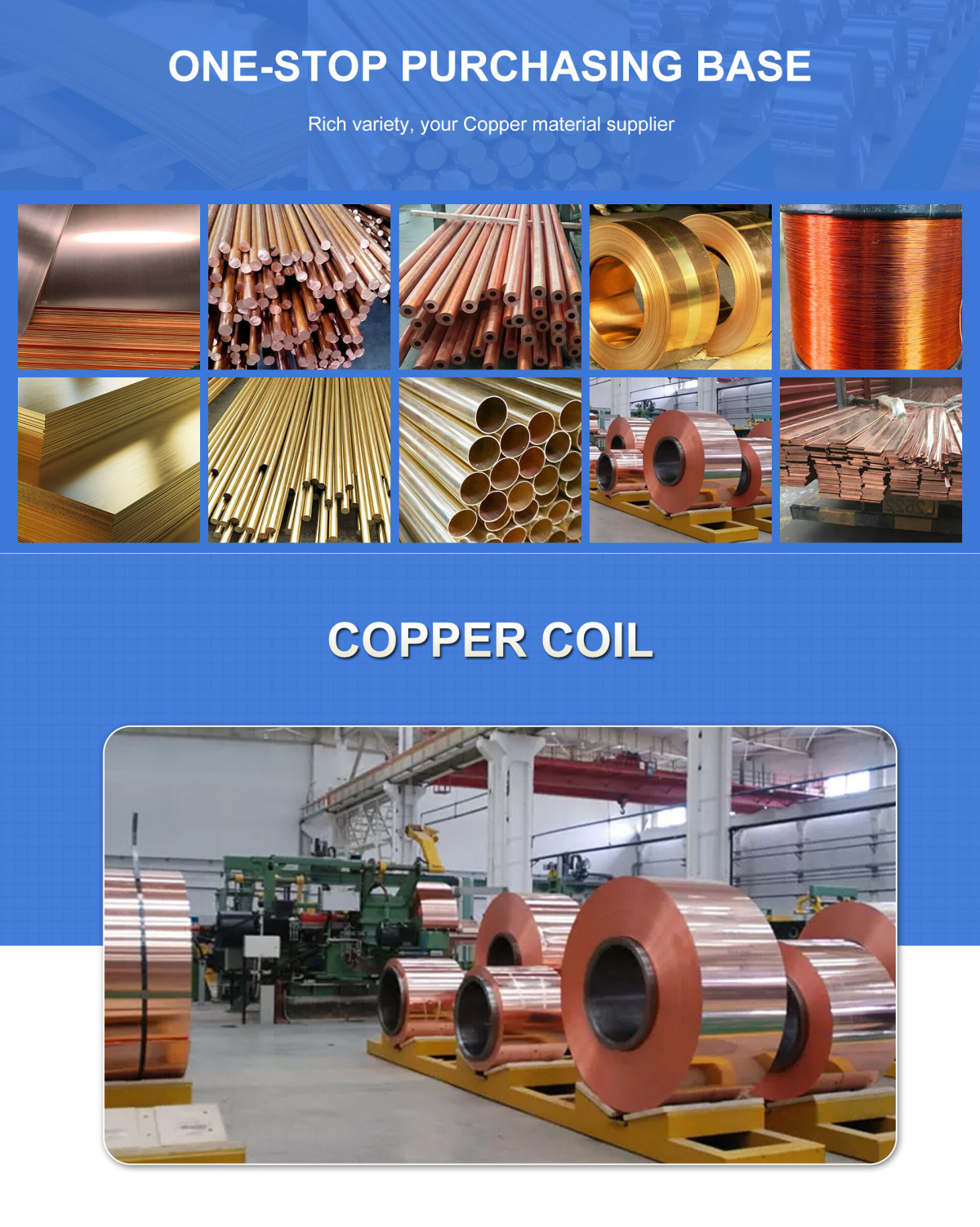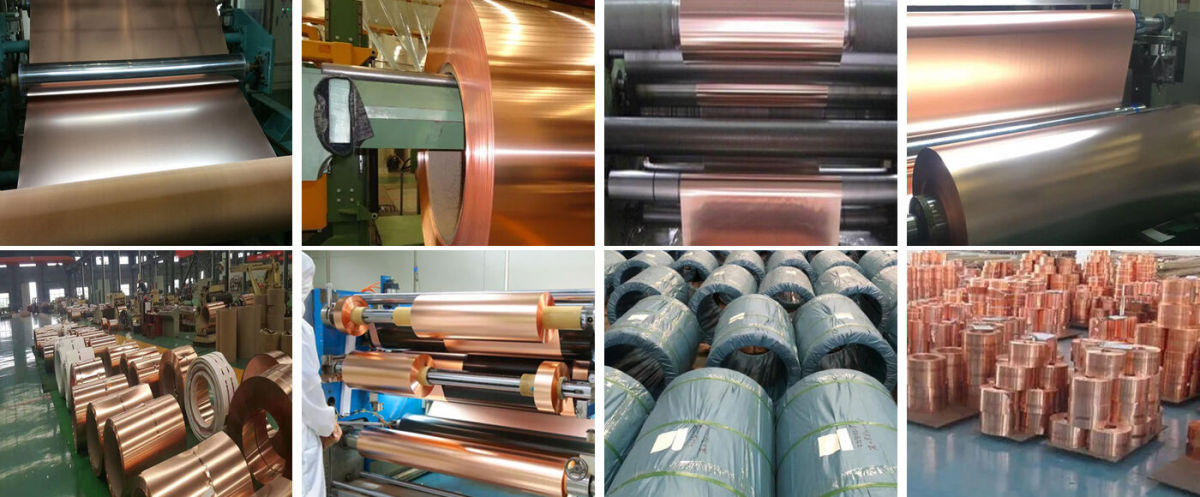
Detailed size range
Thickness range:
The standard thickness of copper strip is 0.035-2.5mm (some data show that it can be expanded to 5.0mm), and common specifications are concentrated between 0.05-2.0mm.
The thickness of copper coil is consistent with that of copper strip, but ultra-thin or thicker specifications (such as 0.1-3.0mm) can be customized according to needs.
2. Width range:
The width of copper strip is usually 7-610mm, and some standards cover narrower (3mm) or wider (1250mm) specifications.
The width of copper coil is similar to that of copper strip, and ultra-narrow or ultra-wide sizes can be customized for special applications.
Other parameters:
The inner diameter of copper coil is usually 80-500mm, and the weight of a single coil can reach 14kg/mm.
The length can be customized according to needs, and the common length is 1-100 meters.
International standards
The international standards corresponding to C26800 include:
ASTM: B36 (plate), B587 (tube).
JIS: C2680.
ISO: CuZn34 (CW506L).
EN: CW506L.
Chinese standards: GB/T 5231-2012 (chemical composition), GB/T 2040-2017 (sheet).
In addition, the material has passed SGS certification and complies with regional standards such as DIN and EN. Its mechanical properties (such as tensile strength, hardness) and conductivity (higher conductivity in soft state) need to be determined according to the specific processing state (such as soft state, semi-hard state, full hard state).
Chemical composition (mass percentage):
Copper (Cu): 64.0%~68.5%
Zinc (Zn): Balance (about 31%~36%)
Lead (Pb): ≤0.15% (some standards such as ASTM stipulate ≤0.09%)
Iron (Fe): ≤0.05%
Other elements: such as boron (B) ≤0.01%, bismuth (Bi) ≤0.002%, etc., total impurity ≤0.45%
Mechanical properties vary significantly with processing conditions (such as annealing, cold working), and common conditions include H00 (soft state) to H10 (full hard state). Take the typical state as an example:
Annealed state (OS035):
Tensile strength: 345 MPa (50 ksi)
Elongation: 60%
Shear strength: 234 MPa (34 ksi)
Semi-hard state (H02):
Tensile strength: 607 MPa (88 ksi)
Elongation: 15%
Full hard state (H04):
Tensile strength: 758 MPa (110 ksi) or 510 MPa (74 ksi) (different test standards or data sources)
Elongation: 8%
Yield strength: 420 MPa (60 ksi)
Brinell hardness: 80 HB
Other conditions (H08):
Tensile strength: 883 MPa (128 ksi)
Elongation: 3%
Physical properties:
Melting point: liquidus 930°C (1710°F), solidus 904°C (1660°F)
Density: 8.1~8.47 g/cm³
Electrical conductivity: 27% IACS (International Annealed Copper Standard)
Thermal conductivity: 116~120 W/m·K
Coefficient of thermal expansion: 20~20.3 µm/m·°C (70~572°F)
Application and processing characteristics:
Corrosion resistance: good, but avoid contact with ammonia, mercury or acidic media to prevent stress corrosion or dezincification.
Processing performance:
Excellent cold working ability, suitable for stamping, drawing and other processes.
Poor hot forming ability, recommended annealing temperature 540~600°C (annealed state) or 800~1300°F (stress relief after cold working).

C26800 copper strip and copper coil production process and product advantages:
I. Production process
1. Raw material processing and melting
Use high-purity cathode copper (copper content 99.99%), and form the ingot by melting and casting to ensure low impurity content.
Some projects use continuous extrusion method to heat and deform the Φ20 copper rod and then cool it to form the ingot.
2. Rolling and rolling
After milling and edge milling, the ingot is rough rolled and finished rolled, and annealing is interspersed in the middle to eliminate stress and adjust the structure.
Copper powder may be added during the rolling process, and the material density is enhanced by multiple sintering and rolling.
3. Surface treatment and cleaning
Including degreasing, pickling, passivation, water washing, brushing and grinding to remove surface oxides and impurities, and finally drying and rolling.
4. Striping and forming
The copper strip strip uses professional cutting equipment to control the width, and the trimming process ensures the edge is regular, and the thickness accuracy can reach ±0.005-0.02mm.
Applying MULTICOIL® technology, stacking copper coils can achieve continuous stamping of long strips and reduce downtime.
2. Product advantages
Excellent material properties
Mechanical properties: tensile strength ≥290 MPa, elongation ≥40%, with both high strength and good plasticity, suitable for complex processing such as cold stamping and deep drawing.
Corrosion resistance: resistant to atmospheric and freshwater corrosion, and has anti-desizinization properties, suitable for humid or corrosive environments.
Processing adaptability
Different hardness states (soft state, 1/4 hard, full hard, etc.) can be provided to meet diverse needs.
The surface is smooth and non-oxidized, and the conductive performance is stable, which is suitable for high-precision fields such as electronic connectors and radio frequency cables.
Environmental protection and certification
Complies with international standards such as ASTM, GB/T, and has passed ISO9001 quality certification and SGS environmental protection certification, meeting lead-free environmental protection requirements.
Production efficiency and economy
Continuous extrusion and MULTICOIL® technology greatly improve production efficiency and reduce mold loss.
Compared with similar materials (such as H68), C26800 has lower cost and outstanding cost performance.
3. Typical applications
Electronic appliances: transformers, battery components, connectors, etc.
Cooling system: radiator shell, bellows and other high temperature resistant parts.
Industrial manufacturing: cold heading wire, copper sleeve, precision stamping parts, etc.
Q1:Do you provide samples? Is it free or extra?
A1:Yes, we can provide samples free of charge and the customer will pay the freight.
Q2:What if I don't have export experience ?
A2:We have reliable forwarder agent which can ship items to you by sea/air/Express to your doorstep. Any way, we will help you choose the most suitable shipping service.
Q3:How long is your lead time?
A3:If it is in stock, it is usually 5-10 days. Or, if there is no inventory, 15 days, depending on the quantity.
Q4:What are your terms of payment?
A4:30% T/T deposit in advance, 70% T/T balance within 5 days after B/L copy, 100%.Irrevocable L/C at sight, 100% Irrevocable L/C after receive B/L 30-120 days, O/A.
Q5:How is your technical support?
A5:We provide lifetime online support through Whatsapp/ Skype/ Wechat/ Email. Any problem after delivery, we will offer you call anytime.
Welcome To Your Inquiry
What can we help you?
RELATED PRODUCTS








